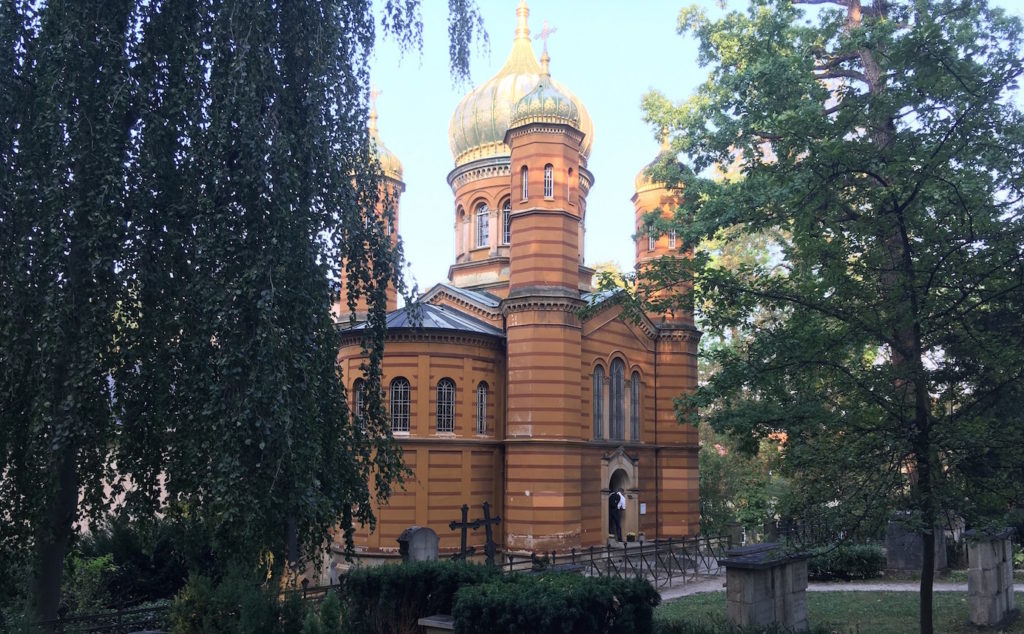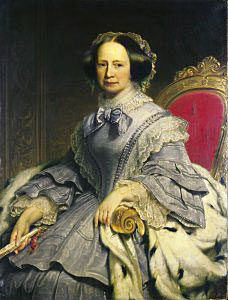 The bells are ringing at 6 p.m. in Weimar, Germany, as I look directly at the dome of a tiny Russian Orthodox church. This church is so small it would fit inside a lecture room at a university. It was built in 1860 to be the burial site of the Grand Duchess Maria Pavlovna, a Russian princess, the granddaughter of Catherine the Great. Maria Pavlovna married into a Lutheran line of Dukes known as the Saxon-Weimar-Eisenach line and came to live in Weimar in 1804.
The bells are ringing at 6 p.m. in Weimar, Germany, as I look directly at the dome of a tiny Russian Orthodox church. This church is so small it would fit inside a lecture room at a university. It was built in 1860 to be the burial site of the Grand Duchess Maria Pavlovna, a Russian princess, the granddaughter of Catherine the Great. Maria Pavlovna married into a Lutheran line of Dukes known as the Saxon-Weimar-Eisenach line and came to live in Weimar in 1804.
 She did not convert when she came to Weimar. In a very unusual move for the time, she was allowed to remain Russian Orthodox. She brought with her icons and Orthodox priests, along with wealth, to her new home far from Russia.
She did not convert when she came to Weimar. In a very unusual move for the time, she was allowed to remain Russian Orthodox. She brought with her icons and Orthodox priests, along with wealth, to her new home far from Russia.
Maria Pavlovna was extremely cultivated. She gathered around her the most important poets. Her support of the arts led her to bring Franz Liszt to Weimar where he would create the revolutionary new symphonic genre of the tone poem. That, plus the conducting techniques he created for the Weimar Orchestra, would change the course of 19th-century music history.
Her husband and the line of Saxon-Weimar-Eisenach dukes are buried in a stark, stucco mausoleum (along with a couple of commoners, Goethe and Schiller, who did so much to define the cultural life of Germany and this city in particular). In contrast to its simple architecture, this Orthodox church has the traditional golden domes and ornate features associated with Orthodoxy. And it is literally cemented onto the back of the mausoleum.
The church today remains an active Orthodox parish. Some people who come to visit the graves of Goethe and Schiller miss it entirely if they don’t wander to the back of the mausoleum. But here it is, a piece of history told in architecture.
Podcast: Play in new window | Download



